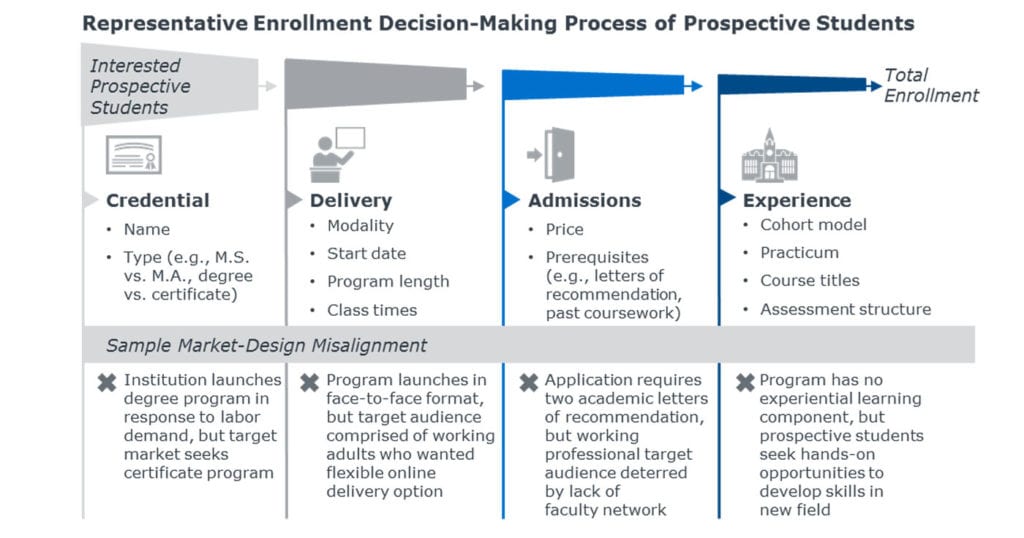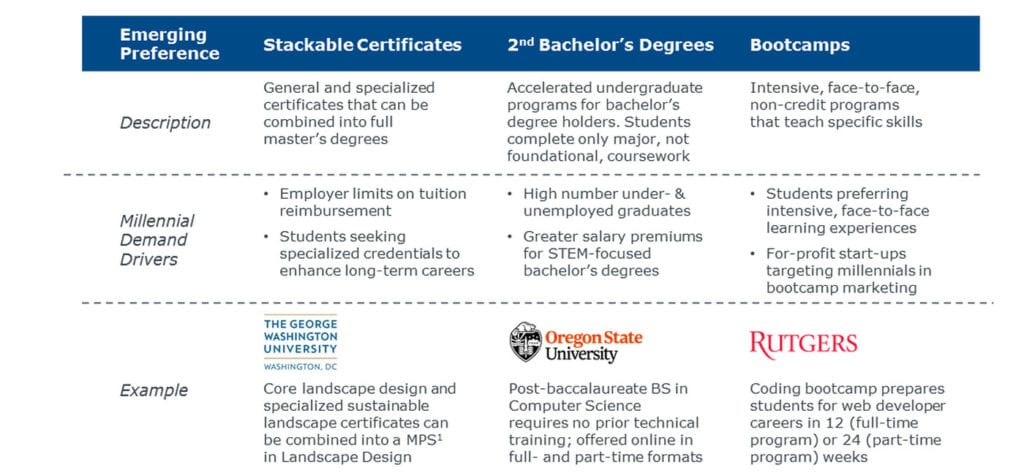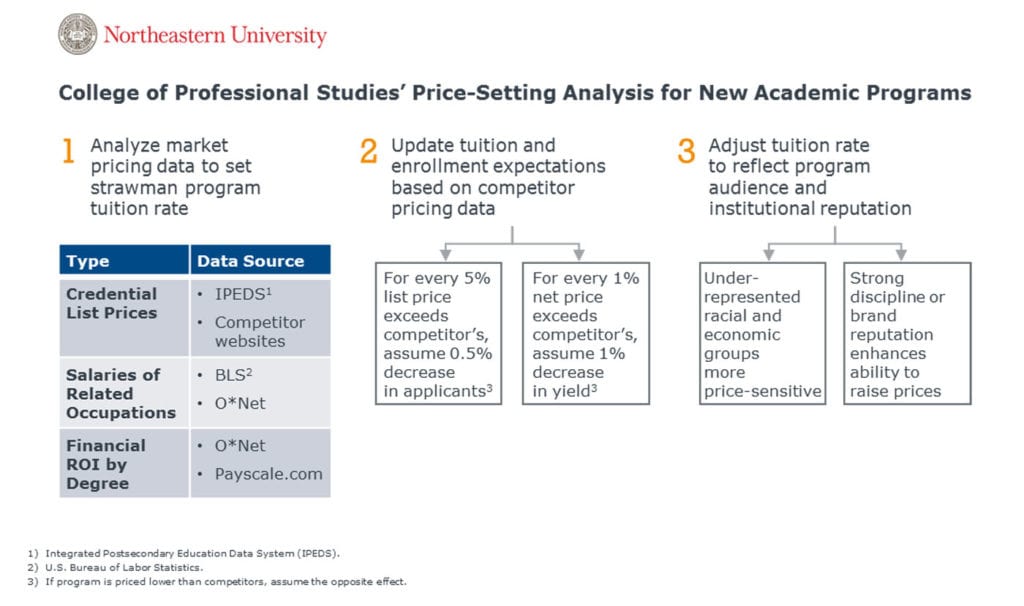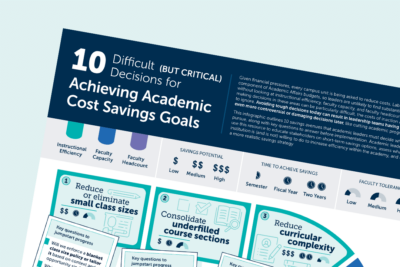4 design choices undermining new program success
In the face of tightening budgets, uncertain enrollments, and declining tuition revenue, colleges and universities need new strategies for growth. Many institutions are confronting this challenge by launching new programs. But often, newly launched programs don’t achieve their enrollment goals, or they experience “profitless growth” due to errors in the program design and launch process.
One of these mistakes is only designing programs around traditional academic program elements, rather than around student preference and need.
Exclusive focus on traditional program designs can undermine new program viability
In today’s market, institutions must do more than identify promising areas of demand. Even if a program is launched in the right field or discipline, miscalculations in program design can deter students from applying and ultimately enrolling. For example, institutions might design a bachelor’s program when the intended audience needs a master’s program or launch a traditional face-to-face master’s program when prospective students require a flexible, online format. The four key areas to consider are:
- Credential type
- Delivery
- Admissions process
- Experience

Align credential and delivery with prospective student needs
The most important design consideration to get right is the alignment of credential type, delivery method, and program length with prospective audience need. To ensure this alignment, faculty and administrators must understand who the intended audience is and what their needs are. To do this faculty and administrators should ask themselves:
- How does the audience plan to use this credential? To change careers? To accelerate careers?
- How will the audience pay for the credential? Tuition reimbursement? Self-pay?
- How much time will the audience dedicate to the program? Full-time? Part-time?
For example, if the target audience is millennials, institutions might consider stackable certificates, second bachelor’s, and bootcamps because most millennials are working, want to move through programs quickly, are targeting specific skills sets, and need to keep costs reasonable.

Design audience appropriate admissions requirements and competitive pricing
There are two main ways that the admissions process can deter potential students from enrolling: unreasonable application requirements and improper pricing. For example, working adults that have been out of school for a decade may forego applying to a program if it requires they submit two letters of recommendation from professors. Instead an institution could allow letters of recommendation from supervisors to stand in for faculty recommendations.
Getting the price right is critical because students are increasingly cost-conscious. While no silver bullet exists to determining price, Northeastern University’s College of Professional Studies has found a way to bring some rigor to the process.
Northeastern has three steps for setting graduate program pricing. First, they analyze IPEDS and student earnings data to set an initial strawman price. Then, they compare that price to their competitors’ using formulas they developed to quantify the relationship between different pricing options.
Northeastern has found that for every 5% that list price exceeds competitors’, they get 0.5% fewer applicants. For every 1% net price exceeds competitors’, they get 1% fewer enrollees. Both effects work in reverse, too, if their prices are lower. Finally, they fine-tune price for qualitative factors, like student demographics and brand, allowing some flexibility in the formulas.

Coordinate experiential learning opportunities with audience interest
The academic and co-curricular opportunities of a program are often deciding factors for students, particularly in crowded markets. Institutions can use the experience design element to help distinguish their programs from competitors and attract students. For example, the University of Denver’s MBA program requires their students to complete four diverse practicums that allow them to explore different sectors while gaining hands-on experience.
Compare such an approach to the University of Texas at Austin’s MBA “CleanTech” concentration option, which specifically targets students interested in renewable energy careers. Like the University of Texas, George Washington uses a special focus, in this case health informatics, to narrow their target audience – federal employees and policymakers in the DC-area. Finally, Indiana University has tapped into student’s concerns over career outcomes by adding a Silicon Valley-based counselor to build relationships with key tech employers and support students’ job searches.

To help faculty and administrators institutions make the right design choices, EAB developed the Market Alignment Checklist, which lays out key questions to consider when designing (or revitalizing) a program.
Additional resources to help institutions avoid the most damaging program launch mistakes
For assistance in overcoming miscalculations in market demand potential, program design, and costs, use EAB’s program launch resources on marketing, market demand, and market alignment available as part of our Academic Program Innovation Resources.
More Resources

Interdisciplinary Program Starter Kit

10 difficult (but critical) decisions for achieving academic cost
savings goals
